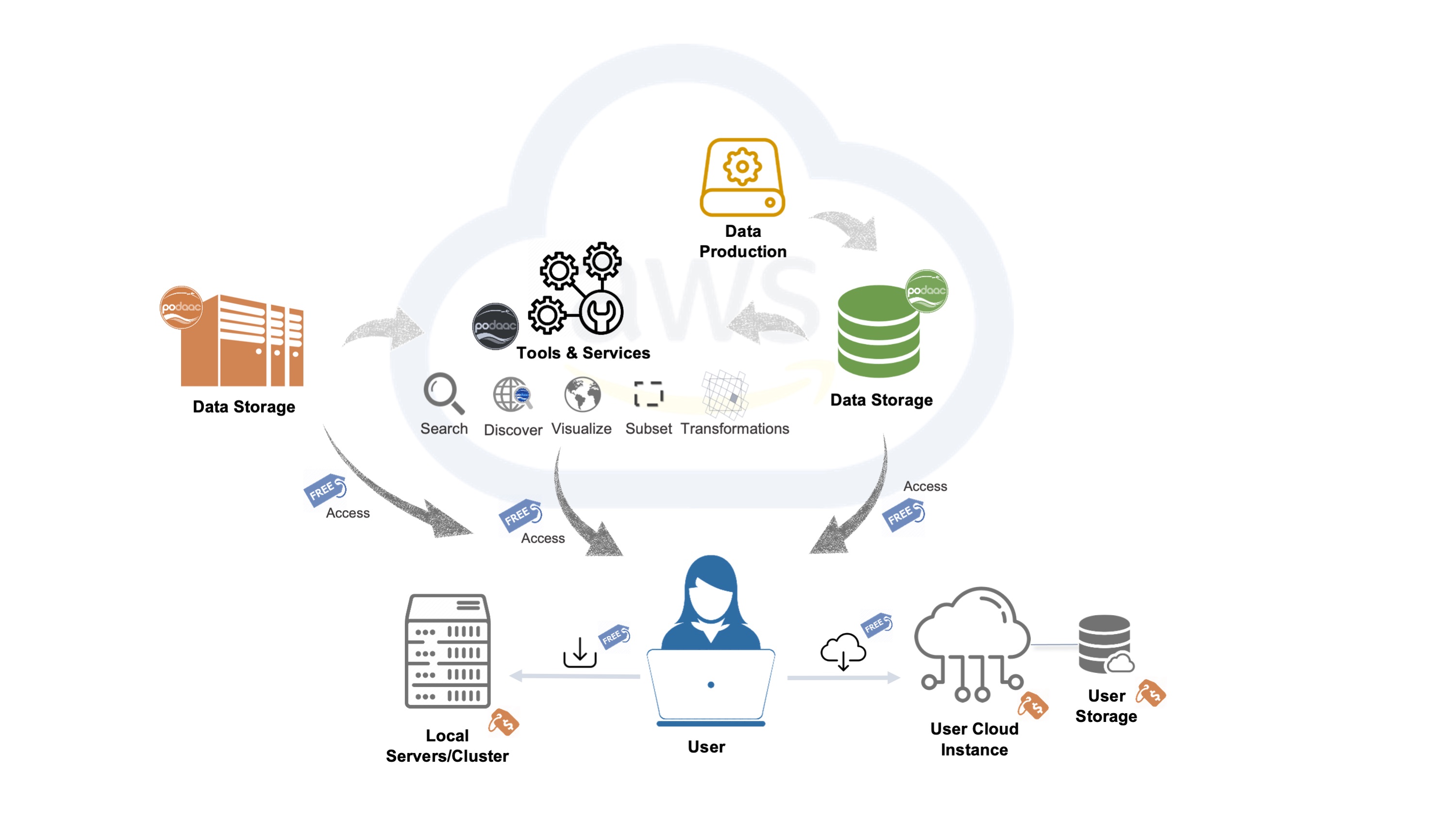Introduction: Access to PO.DAAC datasets in the cloud
PO.DAAC is in the process of moving its data holdings to the cloud. The Cloud Data page at PO.DAAC offers access to cloud-based datasets as well as resources to help guide data users in discovering, accessing, and utilizing cloud data.
The Cloud Datasets section provides a listing page for cloud-archived datasets, with more tools/services integration. The Resources section shares information, updates, data recipes, and other materials that help support the user in discovering, accessing and using datasets from and within the Earthdata Cloud. The Migration section offers information on the transition timeline and datasets, what to expect, and migration-specific FAQs and tutorials. For questions on what this transition means, please see the FAQ section.
During this transition to the cloud, this Cloud Data page will be evolving and continuously updated with new content and data - please check back regularly.
Below are several guides meant to help users get started or continue exploring with NASA Earthdata Cloud data, tools and services








